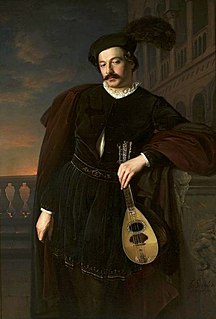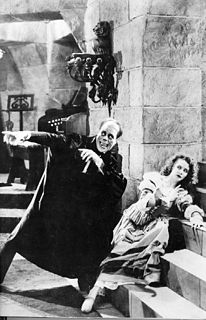External links
- "Susan Kay's Phantom Plans Info on book". Archived from the original on 1 March 2009.
- "Susan Kay interview by Ladyghost". Archived from the original on 2 January 2011.
- Susan Kay at FantasticFiction, 14 July 2012
Susan Kay | |
|---|---|
| Born | 1952 (age 69–70) Manchester, England |
| Pen name | Susan Kay |
| Occupation | Novelist |
| Language | English |
| Nationality | British |
| Period | 1985–1990 |
| Genre | Historical fiction |
| Children | 2 |
Susan Kay (born 1952) is a British writer, the author of two award-winning novels: Legacy and Phantom .
Kay was born on 1952 in Manchester, England. She worked as a primary school teacher until leaving to bring up a family, and now lives with her husband and two children in Cheshire.
Kay’s first novel was Legacy (1985), about the life of Queen Elizabeth I and won a Georgette Heyer Historical Novel Prize and a Betty Trask Award in 1985. [1]
Her second novel, Phantom (1991), expands upon the history of Erik, the hideous, brilliant character from Gaston Leroux's The Phantom of the Opera , in an episodic format of seven chapters from different characters' points of view – first Erik's mother, immediately revolted by her own son; then Erik as a boy being exhibited as a circus freak; then Giovanni, a character of Kay's creation, who takes him in; then Nadir, known in Leroux's novel as the Persian, who is greatly expanded upon and gives an account of Erik in the bloodiest days of his life; then Erik, describing how he settled into his role as Phantom of the Opera; then a back-and-forth narrative between Erik and Christine Daaé, whom he loves obsessively; and lastly, Raoul de Chagny, Erik's rival, giving the denouement. She did not travel to Iran to research the novel, although she did research in person at the Paris Opera House. The novel won the Romantic Novel of the Year Award by the Romantic Novelists' Association in 1991. [2]
Phantom may refer to:

The Phantom of the Opera is a novel by French author Gaston Leroux. It was first published as a serial in Le Gaulois from 23 September 1909 to 8 January 1910, and was released in volume form in late March 1910 by Pierre Lafitte. The novel is partly inspired by historical events at the Paris Opera during the nineteenth century, and by an apocryphal tale concerning the use of a former ballet pupil's skeleton in Carl Maria von Weber's 1841 production of Der Freischütz. It has been successfully adapted into various stage and film adaptations, most notable of which are the 1925 film depiction featuring Lon Chaney, and Andrew Lloyd Webber's 1986 musical.

Don Juan, also known as Don Giovanni (Italian), is a legendary, fictional Spanish libertine who devotes his life to seducing women. Famous versions of the story include a 17th-century play, El burlador de Sevilla y convidado de piedra by Tirso de Molina, a 1787 opera, Don Giovanni, with music by Mozart and a libretto by Lorenzo da Ponte, and a satirical, epic poem, Don Juan, by Lord Byron.

The Phantom of the Opera is a 1925 American silent horror film adaptation of Gaston Leroux's 1910 novel Le Fantôme de l'Opéra, directed by Rupert Julian and starring Lon Chaney in the title role of the deformed Phantom who haunts the Paris Opera House, causing murder and mayhem in an attempt to make the woman he loves a star. The film remains most famous for Chaney's ghastly, self-devised make-up, which was kept a studio secret until the film's premiere. The picture also features Mary Philbin, Norman Kerry, Arthur Edmund Carewe, Gibson Gowland, John St. Polis and Snitz Edwards. The last surviving cast member was Carla Laemmle, niece of producer Carl Laemmle, who played a small role as a "prima ballerina" in the film when she was about 15 years old. The film was released on September 6, 1925, premiering at the Astor Theatre in New York. The film's final budget was $632,357. Some images exist from the film's promotional materials

The Canary Trainer: From the Memoirs of John H. Watson is a 1993 Sherlock Holmes pastiche by Nicholas Meyer. Like The Seven Percent Solution and The West End Horror, The Canary Trainer was published as a "lost manuscript" of the late Dr. John H. Watson. In "The Adventure of Black Peter", an original Arthur Conan Doyle Holmes story from 1904, Watson mentions that his companion recently arrested "Wilson, the notorious canary-trainer, which removed a plague-spot from the East-End of London." This Wilson is not related to the eponymous character of Meyer's novel. Meyer's "trainer" is Erik, the principal figure of Gaston Leroux's 1910 novel The Phantom of the Opera. It is from this unchronicled tale that The Notorious Canary Trainers take their name.
The University of East Anglia's Creative Writing Course was founded by Sir Malcolm Bradbury and Sir Angus Wilson in 1970. The M.A. is widely regarded as the most prestigious and successful in the country and competition for places is notoriously tough.

Christine Daaé is a fictional character and the female protagonist of Gaston Leroux's 1910 novel The Phantom of the Opera and of the various adaptations of the work. Erik, the Phantom of the Opera and Viscount Raoul de Chagny both fall in love with her.

Phantom is a 1990 novel by Susan Kay, based on the 1910 Gaston Leroux novel The Phantom of the Opera. It is a biography of the title character Erik.
Don Juan Triumphant is the name of a fictional opera written by the title character in the 1910 novel The Phantom of the Opera. In the 1986 musical The Phantom of the Opera by Andrew Lloyd Webber, the concept is expanded as an opera within a musical and the performance of it plays a major role in the storyline. The fictional piece draws major inspiration from Wolfgang Amadeus Mozart's famous 1787 work Don Giovanni yet the Phantom's opera is depicted as far more bleak and dark.

The Phantom of the Opera is a 1990 American two-part television miniseries directed by Tony Richardson and starring Charles Dance in the title role. It is adapted from Arthur Kopit's book from his stage musical Phantom, which is based loosely on Gaston Leroux's 1910 novel.
There have been many literary and dramatic works based on Gaston Leroux's 1910 novel The Phantom of the Opera, ranging from stage musicals to films to children's books. Some well known stage and screen adaptations of the novel are the 1925 film and the Andrew Lloyd Webber musical ; Susan Kay's 1990 Phantom is one of the best known novels and includes in-depth study of the title character's life and experiences.
Raoul, Vicomte de Chagny is a fictional character and one of the protagonists of Gaston Leroux's 1910 novel The Phantom of the Opera.
Meg Giry is one of the fictional characters from Gaston Leroux's 1910 novel The Phantom of the Opera. In the story, she is Madame Giry's oldest daughter.

Erik is the title character from Gaston Leroux's 1910 novel Le Fantôme de l'Opéra, best known to English speakers as The Phantom of the Opera. The character has been adapted to alternative media several times, including in the 1925 film adaptation starring Lon Chaney, the 1943 remake starring Claude Rains and Andrew Lloyd Webber's 1986 musical.
Susan Fletcher is a British novelist.
Susan Napier was a popular New Zealand writer of over 30 romance novels in various Mills & Boon category lines since 1984.
The Persian is a major character from the 1910 Gaston Leroux novel The Phantom of the Opera. In the book he is the one who tells most of the background of Erik's history. Erik refers to him as the "daroga" and his memoirs are featured in five chapters of the novel. He is also considered Erik's only friend.
The Phantom of the Opera is a 1910 novel by Gaston Leroux.
Elizabeth Chadwick is an author of historical fictions. She is a member of Regia Anglorum, a medieval reenactment organisation.

Margaret Elizabeth Lisle Trask was an English writer of romance novels.